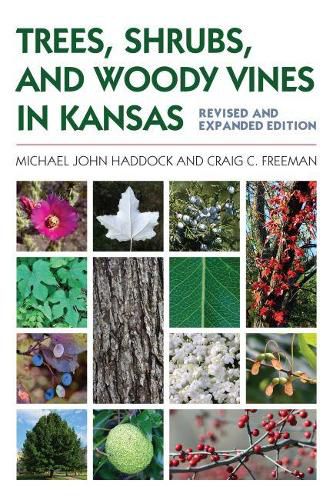Readings Newsletter
Become a Readings Member to make your shopping experience even easier.
Sign in or sign up for free!
You’re not far away from qualifying for FREE standard shipping within Australia
You’ve qualified for FREE standard shipping within Australia
The cart is loading…






With its high plains, rolling hills, and river valleys, Kansas is home to a surprisingly diverse flora, and among these riches are the 166 species of trees, shrubs, and woody vines identified, described, and pictured in this handy guide. Expanding and updating H. A. Stephens’s 1969 classic, this handbook offers full descriptions of woody plant species found in the wild in Kansas, 138 of them native. County-level distribution maps show where species have been documented, and nearly 1,000 color photographs highlight morphological features-habit, bark, leaves, flowers, and fruit.
Updated scientific nomenclature reflects our current understanding of the taxonomy of woody species, as well as the most recent findings in studies of DNA, macro- and micromorphology, cytology, ecology, and phenology. With keys for identification, additional notes about nearly 100 other native and nonnative woody plants found in the state, and a comprehensive glossary defining all technical botanical terms, this user-friendly handbook should be the go-to guide for plant enthusiasts and professionals alike.
$9.00 standard shipping within Australia
FREE standard shipping within Australia for orders over $100.00
Express & International shipping calculated at checkout
With its high plains, rolling hills, and river valleys, Kansas is home to a surprisingly diverse flora, and among these riches are the 166 species of trees, shrubs, and woody vines identified, described, and pictured in this handy guide. Expanding and updating H. A. Stephens’s 1969 classic, this handbook offers full descriptions of woody plant species found in the wild in Kansas, 138 of them native. County-level distribution maps show where species have been documented, and nearly 1,000 color photographs highlight morphological features-habit, bark, leaves, flowers, and fruit.
Updated scientific nomenclature reflects our current understanding of the taxonomy of woody species, as well as the most recent findings in studies of DNA, macro- and micromorphology, cytology, ecology, and phenology. With keys for identification, additional notes about nearly 100 other native and nonnative woody plants found in the state, and a comprehensive glossary defining all technical botanical terms, this user-friendly handbook should be the go-to guide for plant enthusiasts and professionals alike.